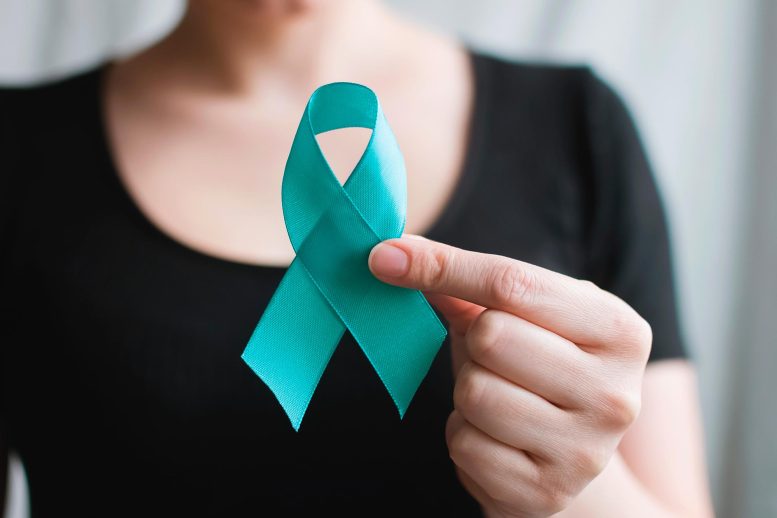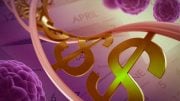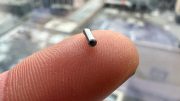
The IRON tool uses AI to predict chemotherapy success in ovarian cancer patients with an 80% accuracy, offering a substantial improvement over the current 50% prediction rate. This tool analyzes patient data, including tumor DNA and CT scans, to enhance treatment personalization.
Results from a study published in the journal Nature Communications, co-designed and co-supervised by Prof. Evis Sala from the Catholic University at Rome, and Policlinico A. Gemelli IRCCS.
A model based on artificial intelligence is able to predict the therapy outcome (measured by volumetric reduction of tumor lesions) in 80% of ovarian cancer patients. The AI-based model has an accuracy of 80%, significantly better than current clinical methods.
IRON: The Forefront of Predictive Oncology
The tool, named IRON (Integrated Radiogenomics for Ovarian Neoadjuvant therapy), analyzes various patient clinical features, from circulating tumor DNA in the blood (liquid biopsy) to general characteristics (age, health status, etc.), tumor markers, and disease images obtained through CT scans. Based on this analysis, it provides a prediction of the therapy’s likelihood of success.
This achievement stems from a recent study published in Nature Communications, conducted on 134 high-grade ovarian cancer patients. The study was coordinated by Professor Evis Sala, Chair of Diagnostic Imaging and Radiotherapy at the Faculty of Medicine and Surgery of the Catholic University and Director of the Advanced Radiology Center at the Policlinico Universitario A. Gemelli IRCCS. The AI model was initially developed by the team of Professor Sala at the University of Cambridge.
The Challenge of Ovarian Cancer Diagnosis and Treatment
Ovarian cancer affects over five thousand women annually in Italy, adding to the thirty thousand patients who have already received a diagnosis. Due to its lack of specific early symptoms, diagnosis often occurs in advanced stages of disease. High-grade serous ovarian carcinoma, constituting 70-80% of ovarian tumors, is particularly aggressive and frequently resistant to chemotherapy. Currently, therapy response prediction for this type of tumor is only 50% accurate.
Additionally, there are few clinically useful biomarkers for this type of cancer due to its high heterogeneity, varying significantly from patient to patient. This led to the development of an artificial intelligence-based tool capable of accurately predicting chemotherapy responders.
The Role of Biomarkers and AI in Personalizing Cancer Care
“We compiled two independent datasets with a total of 134 patients (92 cases in the first dataset, 42 in the second independent test set),” Professor Sala and Dr. Mireia Crispin Ortuzar from Cambridge explained. For all patients, clinicians collected clinical data, including demographic information and treatment details, as well as blood biomarkers like CA-125 and circulating tumor DNA (ctDNA). Quantitative characteristics of the tumor derived from CT scan images of all primary and metastatic tumor sites were also obtained.
Omental and pelvic/ovarian locations (common for ovarian cancer spread) represented the majority of disease burden initially. Omental deposits showed a significantly better response to neoadjuvant therapy compared to pelvic disease. Tumor mutations (e.g., TP53 MAF assessed on circulating DNA) and the marker CA-125 were correlated with overall disease burden before treatment and therapy response.
Furthermore, advanced analysis of CT scan images revealed six patient subgroups with distinct biological and clinical characteristics, indicative of therapy response. All these tumor features were used as input data for artificial intelligence algorithms that collectively form the tool. The developed model was then trained and its effectiveness validated on an independent patient sample.
Future Directions: Clinical Applications of the IRON Model
“From a clinical perspective, the proposed framework addresses the unmet need to early identify patients unlikely to respond to neoadjuvant therapy and may be directed to immediate surgical intervention,” Professor Sala emphasized.
“The tool could be applied to stratify the risk of each individual patient in future clinical research conducted at Policlinico Gemelli in collaboration with Professor Giovanni Scambia’s team, Chair of Gynecology and Obstetrics at the Faculty of Medicine and Surgery of the Catholic University and Scientific Director of the Policlinico Universitario Agostino Gemelli IRCCS Foundation,” professor Sala concludes.
Reference: “Integrated radiogenomics models predict response to neoadjuvant chemotherapy in high grade serous ovarian cancer” by Mireia Crispin-Ortuzar, Ramona Woitek, Marika A. V. Reinius, Elizabeth Moore, Lucian Beer, Vlad Bura, Leonardo Rundo, Cathal McCague, Stephan Ursprung, Lorena Escudero Sanchez, Paula Martin-Gonzalez, Florent Mouliere, Dineika Chandrananda, James Morris, Teodora Goranova, Anna M. Piskorz, Naveena Singh, Anju Sahdev, Roxana Pintican, Marta Zerunian, Nitzan Rosenfeld, Helen Addley, Mercedes Jimenez-Linan, Florian Markowetz, Evis Sala and James D. Brenton, 24 October 2023, Nature Communications.
DOI: 10.1038/s41467-023-41820-7









Be the first to comment on "AI’s Leap in Ovarian Cancer: Predicting Therapy Success With IRON"